George Albert Smith is a Actor, Director, Writer, Producer, Director of Photography, Editor, Production Design and Cinematography British born on 4 january 1864 at London (United-kingdom)

George Albert Smith (4 January 1864 – 17 May 1959) was a stage hypnotist, psychic, magic lantern lecturer, astronomer, inventor, and one of the pioneers of British cinema, who is best known for his controversial work with Edmund Gurney at the Society for Psychical Research, his short films from 1897 to 1903, which pioneered film editing and close-ups, and his development of the first successful colour film process, Kinemacolor.
In 1892, after leaving the SPR, he acquired the lease of the St. Anne's Well Gardens in Hove from the estate of financier and philanthropist Sir Isaac Lyon Goldsmid, which he cultivated into a popular pleasure garden, where from 1894 he started staging public exhibitions of hot air ballooning, parachute jumps, a monkey house, a fortune teller, a hermit living in a cave and magic lantern shows of a series of dissolving views. Smith also began to present these dioramic lectures at the Brighton Aquarium, where he had first performed with Douglas Blackburn in 1882. Smith's skilful manipulation of the lantern, cutting between lenses (from slide to slide) to show changes in time, perspective and location necessary for story telling, would allow him to develop many of the skills he would later put to use as a pioneering film maker developing the grammar of film editing. Smith had attended the Lumière programme in Leicester Square in March 1896 and spurred on by the films of Robert Paul, which played in Brighton for that summer season, he and local chemist James Williamson acquired a prototype cine cameras from local engineer Alfred Darling, who had begun to manufacture film equipment after carrying out repairs for Brighton-based film pioneer Esmé Collings. In 1897, with the technical assistance of Darling and chemicals purchased from Williamson, Smith turned the pump house into a film factory for developing and printing and developed into a successful commercial film processor as well as patenting a camera and projector system of his own. Both he and his neighbour Williamson would go on to become pioneering film makers in their own right creating numerous historic minute-long films.
On 29 March 1897, Smith added animated photographs to the end of his twice-daily programme of projected entertainment at the Brighton Aquarium, as an outlet for his burgeoning film production. Many of Smith's early films, including The Miller and the Sweep and Old Man Drinking a Glass of Beer (both 1897) were comedies thanks to the influence of his wife, Laura Bayley, who had previously acted in pantomime and comic revue. However Smith also corresponded with special effects pioneer Georges Méliès whose influence can be seen in The X-Rays and The Haunted Castle (both 1897) the later of which, along with The Corsican Brothers, Photographing a Ghost and, perhaps his most accomplished work from this time, Santa Claus (all 1898), include special effects created using a process of double-exposure patented by Smith. Many of Smith's films were acquired for distribution by Charles Urban for the Warwick Trading Company and the two began a long business relationship with a joint show of Smith and Méliès' films at the Alhambra Theatre, Brighton in late 1898 and early 1899.
In 1899 Smith, with the financial assistance of Urban, constructed a glass house film studio at St. Ann's Well Gardens, ushering in a highly creative period for him as a film maker. That year he shot the single scene The Kiss in the Tunnel (1899) which was then seamlessly edited into Cecil Hepworth's View From an Engine Front - Train Leaving Tunnel (1899) to enliven the staid phantom ride genre and demonstrate the possibilities of creative editing. The following year he experimented with reversing in The House That Jack Built (1900), developed dream-time and the dissolve effect in Let Me Dream Again (1900) and pioneered the use of the close-up with Grandma's Reading Glass, As Seen Through a Telescope and Spiders on a Web (all 1900). In 1902 Smith collaborated with old friend Georges Méliès at the Star Films studio in Montreil, Paris, on a pre-enactment of the Coronation of King Edward VII and Queen Alexandra commissioned by Charles Urban of the Warwick Trading Company after rival company Mutoscope and Biograph acquired the rights to film the actual event. In 1903 Charles Urban left the Warwick Trading Company to form the Charles Urban Trading Company taking the rights to Smith's films with him, at what marked the end of his most active period as a film-maker.
In 1904, A.H. Tee took over the lease on St Ann's Well Gardens, and Smith moved to a new home in Southwick, Sussex, dubbed Laboratory Lodge, where with finance from Charles Urban, he went on to develop the Lee-Turner Process, which had been acquired by Urban following the death of Edward Raymond Turner in 1903, into the first successful colour film process, Kinemacolor. Smith proved the new process, which abandoned the three-colour approach of Edward Turner in favour of a two-colour (red-green) process, with early test films such as Tartans of Scottish Clans (1906) and Woman Draped in Patterned Handkerchiefs (1908) before giving a trade demonstration of A Visit to the Seaside (1908) on 1 May 1908, followed by public demonstration from early 1909 as far afield as Paris and New York, for which Smith was awarded a Silver Medal by the Royal Society of Arts. In 1910 Urban founded the Natural Colour Kinemacolor Company, which successfully used the process to produce over 100 short features at its studios in Hove and Nice, until it was put out of business by a 1914 patent suit filed by William Friese-Greene, which ended Smith's film career.
In his later life Smith became a Fellow of the Royal Astronomical Society and in the late 1940s was rediscovered by the British film community, being made a Fellow of the British Film Academy in 1955. Smith died in Brighton on 17 May 1959. Hove Museum has a permanent display on Smith and Williamson.
Source : Wikidata
George Albert Smith

- Infos
- Photos
- Best films
- Family
- Characters
- Awards
Nationality United-kingdom
Birth 4 january 1864 at London (United-kingdom)
Death 17 may 1959 (at 95 years) at Brighton (United-kingdom)
Birth 4 january 1864 at London (United-kingdom)
Death 17 may 1959 (at 95 years) at Brighton (United-kingdom)
George Albert Smith (4 January 1864 – 17 May 1959) was a stage hypnotist, psychic, magic lantern lecturer, astronomer, inventor, and one of the pioneers of British cinema, who is best known for his controversial work with Edmund Gurney at the Society for Psychical Research, his short films from 1897 to 1903, which pioneered film editing and close-ups, and his development of the first successful colour film process, Kinemacolor.
Biography
Smith was born in Cripplegate, London in 1864. His father Charles Smith was a ticket-writer and artist. He moved with his family to Brighton, where his mother ran a boarding house on Grand Parade, following the death of his father. It was in Brighton in the early 1880s that Smith first came to public attention touring the city's performance halls as a stage hypnotist. In 1882 he teamed up with Douglas Blackburn in an act at the Brighton Aquarium involving muscle-reading, in which the blindfolded performer identifies objects selected by the audience, and second sight, in which the blindfolded performer finds objects hidden by his assistant somewhere in the theatre. The Society for Psychical Research (SPR) accepted Smith's claims that the act was genuine and after becoming a member of the Society he was appointed private secretary to the Honorary Secretary Edmund Gurney from 1883 to 1888. In 1887, Gurney carried out a number of "hypnotic experiments" in Brighton, with Smith as his "hypnotizer", which in their day made Gurney an impressive figure to the British public. Since then it has been heavily studied and critiqued by Trevor Hall in his study The Strange Case of Edmund Gurney. Hall concluded that Smith (using his stage abilities) faked the results that Gurney trusted in his research papers, and this may have led to Gurney's mysterious death from a narcotic overdose in June 1888. Following Gurney's death his successors, F. W. H. Myers and F. Podmore, continued to employ Smith as their private secretary and he co-authored the paper, Experiments in Thought Transference for the Society's journal the following year. Blackburn publicly admitted fraud in 1908 and again in 1911, although Smith consistently denied it.In 1892, after leaving the SPR, he acquired the lease of the St. Anne's Well Gardens in Hove from the estate of financier and philanthropist Sir Isaac Lyon Goldsmid, which he cultivated into a popular pleasure garden, where from 1894 he started staging public exhibitions of hot air ballooning, parachute jumps, a monkey house, a fortune teller, a hermit living in a cave and magic lantern shows of a series of dissolving views. Smith also began to present these dioramic lectures at the Brighton Aquarium, where he had first performed with Douglas Blackburn in 1882. Smith's skilful manipulation of the lantern, cutting between lenses (from slide to slide) to show changes in time, perspective and location necessary for story telling, would allow him to develop many of the skills he would later put to use as a pioneering film maker developing the grammar of film editing. Smith had attended the Lumière programme in Leicester Square in March 1896 and spurred on by the films of Robert Paul, which played in Brighton for that summer season, he and local chemist James Williamson acquired a prototype cine cameras from local engineer Alfred Darling, who had begun to manufacture film equipment after carrying out repairs for Brighton-based film pioneer Esmé Collings. In 1897, with the technical assistance of Darling and chemicals purchased from Williamson, Smith turned the pump house into a film factory for developing and printing and developed into a successful commercial film processor as well as patenting a camera and projector system of his own. Both he and his neighbour Williamson would go on to become pioneering film makers in their own right creating numerous historic minute-long films.
On 29 March 1897, Smith added animated photographs to the end of his twice-daily programme of projected entertainment at the Brighton Aquarium, as an outlet for his burgeoning film production. Many of Smith's early films, including The Miller and the Sweep and Old Man Drinking a Glass of Beer (both 1897) were comedies thanks to the influence of his wife, Laura Bayley, who had previously acted in pantomime and comic revue. However Smith also corresponded with special effects pioneer Georges Méliès whose influence can be seen in The X-Rays and The Haunted Castle (both 1897) the later of which, along with The Corsican Brothers, Photographing a Ghost and, perhaps his most accomplished work from this time, Santa Claus (all 1898), include special effects created using a process of double-exposure patented by Smith. Many of Smith's films were acquired for distribution by Charles Urban for the Warwick Trading Company and the two began a long business relationship with a joint show of Smith and Méliès' films at the Alhambra Theatre, Brighton in late 1898 and early 1899.
In 1899 Smith, with the financial assistance of Urban, constructed a glass house film studio at St. Ann's Well Gardens, ushering in a highly creative period for him as a film maker. That year he shot the single scene The Kiss in the Tunnel (1899) which was then seamlessly edited into Cecil Hepworth's View From an Engine Front - Train Leaving Tunnel (1899) to enliven the staid phantom ride genre and demonstrate the possibilities of creative editing. The following year he experimented with reversing in The House That Jack Built (1900), developed dream-time and the dissolve effect in Let Me Dream Again (1900) and pioneered the use of the close-up with Grandma's Reading Glass, As Seen Through a Telescope and Spiders on a Web (all 1900). In 1902 Smith collaborated with old friend Georges Méliès at the Star Films studio in Montreil, Paris, on a pre-enactment of the Coronation of King Edward VII and Queen Alexandra commissioned by Charles Urban of the Warwick Trading Company after rival company Mutoscope and Biograph acquired the rights to film the actual event. In 1903 Charles Urban left the Warwick Trading Company to form the Charles Urban Trading Company taking the rights to Smith's films with him, at what marked the end of his most active period as a film-maker.
In 1904, A.H. Tee took over the lease on St Ann's Well Gardens, and Smith moved to a new home in Southwick, Sussex, dubbed Laboratory Lodge, where with finance from Charles Urban, he went on to develop the Lee-Turner Process, which had been acquired by Urban following the death of Edward Raymond Turner in 1903, into the first successful colour film process, Kinemacolor. Smith proved the new process, which abandoned the three-colour approach of Edward Turner in favour of a two-colour (red-green) process, with early test films such as Tartans of Scottish Clans (1906) and Woman Draped in Patterned Handkerchiefs (1908) before giving a trade demonstration of A Visit to the Seaside (1908) on 1 May 1908, followed by public demonstration from early 1909 as far afield as Paris and New York, for which Smith was awarded a Silver Medal by the Royal Society of Arts. In 1910 Urban founded the Natural Colour Kinemacolor Company, which successfully used the process to produce over 100 short features at its studios in Hove and Nice, until it was put out of business by a 1914 patent suit filed by William Friese-Greene, which ended Smith's film career.
In his later life Smith became a Fellow of the Royal Astronomical Society and in the late 1940s was rediscovered by the British film community, being made a Fellow of the British Film Academy in 1955. Smith died in Brighton on 17 May 1959. Hove Museum has a permanent display on Smith and Williamson.
Usually with
Filmography of George Albert Smith (24 films)
Actor
 , 1minutes
, 1minutesDirected by Cecil Hepworth, George Albert Smith
Origin United-kingdom
Genres Comedy, Romance, Sex comedy
Themes Films about sexuality, Transport films, Erotic films, Rail transport films, Film se déroulant dans un train
Actors George Albert Smith
Roles Husband
Rating60%





La caméra filme l'entrée d'un tunnel, d'où jaillit un train à vapeur. La caméra se met à avancer elle-même sur la seconde voie, entrant dans le tunnel et dans le noir. Dans un compartiment de 1 classe, un homme lit son journal et fume le cigare. Devant lui, une voyageuse lit une revue. Elle lève le regard vers son voisin qui se penche et la chatouille sous le menton. Charmée, elle rit et il redouble de séduction. Il se débarrasse du journal, se lève et enlève son encombrant chapeau haut de forme. Il dépose un rapide baiser sur la bouche de la jeune dame qui pouffe de rire tandis qu'il se rassied et recoiffe son chapeau. Les rires de sa voisine l'encouragent. Il se lève de nouveau, pose sa coiffe sur la banquette et va embrasser une nouvelle fois la dame, puis se rassied, aplatissant son chapeau qu'il remet aussitôt en forme. Les deux voyageurs se replongent alors dans leur lecture. La caméra sort du tunnel.
Director
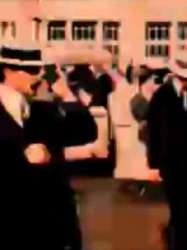
A Visit to the Seaside (1908)
, 8minutesDirected by George Albert Smith
Origin United-kingdom
Genres Documentary
Rating59%






Tartans of Scottish Clans (1906)
, 1minutesDirected by George Albert Smith
Origin United-kingdom
Genres Documentary
Rating52%






The Sick Kitten (1903)
Directed by George Albert Smith
Origin United-kingdom
Genres Drama, Comedy
Themes Films about animals, Films about cats, Mise en scène d'un mammifère
Rating57%






Mary Jane's Mishap (1903)
, 4minutesDirected by George Albert Smith
Origin United-kingdom
Genres Comedy
Rating64%





A housemaid (played by Smith's wife, Laura Bayley) starts a fire in the kitchen stove by putting paraffin on it. It causes an explosion that sends her up the chimney. She emerges from the chimney pot on top of the house and her scattered remains fall to the ground. Later, Mary Jane's ghost rises from her grave to find her paraffin can and once she finds it, she goes to her final resting place.
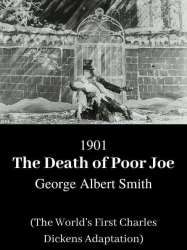
The Death of Poor Joe (1901)
, 1minutesDirected by George Albert Smith
Origin United-kingdom
Genres Drama
Rating48%





Joe est un enfant balayeur pauvre. Il meurt de froid, son balai à la main, accolé à un mur de cimetière, dans les bras d'un policier.
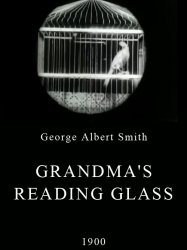 , 1minutes
, 1minutesDirected by George Albert Smith
Origin United-kingdom
Genres Drama, Comedy
Rating60%





Tandis que sa grand-mère est occupée à coudre, une jeune garçon s'amuse à observer différents objets à l'aide d'une loupe. Il regarde successivement une publicité dans un journal (premier plan du film), le mécanisme d'une montre, un canari dans sa cage, l’œil de sa grand-mère qui riboule comiquement, puis la tête du chaton dans son panier. Il veut continuer le jeu mais sa grand-mère y met fin.
 , 2minutes
, 2minutesDirected by Georges Méliès, George Albert Smith
Origin France
Genres Fantastic, Fantasy, Horror
Themes Films about magic and magicians, Films about religion, Demons in film, Vampires in film
Actors Georges Méliès, Jehanne d'Alcy
Rating66%





The film opens with a large bat flying into a medieval castle. The bat circles the room, before suddenly changing into Mephistopheles, an incarnation of the Devil. Mephistopheles produces a cauldron and an assistant, who helps him conjure a woman from the cauldron.
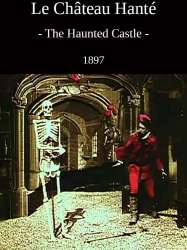
Directed by Georges Méliès, George Albert Smith
Origin France
Genres Fantastic, Horror
Themes Films about religion, Demons in film
Actors Georges Méliès, Jehanne d'Alcy
Rating62%





Two men enter a room in a castle; one offers a chair to the other, and then exits. The remaining man attempts to sit down, but the chair moves away from him and he falls to the ground. When the man approaches the chair, it turns first into a ghost, then a skeleton, and then an armored knight; then it disappears completely. Turning, the man finds himself confronted by Satan. He attempts to escape, but his way is blocked by a ghost.
 , 1minutes
, 1minutesDirected by George Albert Smith
Origin United-kingdom
Genres Horror
Themes Ghost films
Rating56%





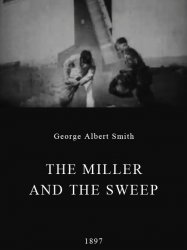
Directed by George Albert Smith
Origin United-kingdom
Genres Comedy
Rating56%





A miller is carrying a sack of flour from his windmill, when he accidentally bumps into a chimney sweep who is carrying a sack of soot. The two start fighting, during the course of which the miller is covered with soot and the chimney sweep is covered with flour. The chimney sweep chases the miller off screen, and a small crowd of adults and children appears unexpectedly from the right of the screen to chase after them both. The film finishes when the last of the crowd exits the shot.
 Connection
Connection







